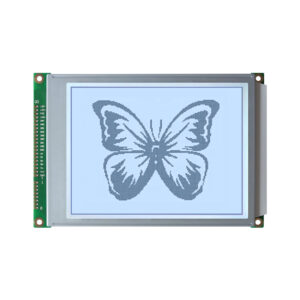
Great things in business are never done by one person. They’re done by a team of people. We have that dynamic group of peoples
The world of displays is constantly evolving, and two technologies consistently dominate the high-end market: AMOLED and OLED. But what exactly are they, and what’s the difference between them? This article dives deep into the nuances of AMOLED and OLED displays, clarifying their similarities, differences, and which one might be the better choice for you. Whether you’re a tech enthusiast, a casual smartphone user, or someone looking for the best visual experience, understanding these display technologies is crucial. This detailed guide is worth reading because it will demystify the complexities of display technology, empowering you to make informed decisions about your next device.

A display is an electronic visual output device that presents images, text, and videos. It’s the window through which we interact with our digital world, allowing us to see and process information from our computers, smartphones, televisions, and more. The quality of a display has a significant impact on our viewing experience, influencing how we perceive colours, sharpness, and overall clarity. The importance of the display extends beyond just entertainment. In professional settings, a high-quality display is critical for tasks like graphic design, video editing, and detailed data analysis where precision and accuracy are paramount. Therefore, choosing the right display is crucial for optimal performance and satisfaction with our devices. The display’s quality directly affects how we consume and interact with digital content, making it a foundational element of modern technology.
The importance of display quality is further underscored by its impact on our eye health and overall well-being. A poor-quality display can cause eye strain, headaches, and fatigue, especially during prolonged use. Conversely, a high-quality display with features like proper brightness, contrast, and colour accuracy can reduce these negative effects, making the viewing experience more comfortable. The display is the primary interface through which we interact with technology, and its performance directly affects our overall user experience, emphasizing its critical role in our daily lives. Different display technologies offer a wide range of capabilities, and it is important to understand these to make the best choice for your needs.
OLED, which stands for Organic Light Emitting Diode, represents a revolutionary display technology that operates differently from traditional LCD displays. OLED displays use organic compounds that emit light when an electric current is applied, eliminating the need for a backlight. Each pixel in an OLED is self-illuminating, allowing for precise control over light and colour. This means that when a pixel is ‘off,’ it produces true black, as there’s no light being emitted. OLED display technology excels in providing superior contrast ratios and vivid colours because it allows the display to turn off individual pixels completely.
Traditional OLED displays typically use a passive matrix configuration, where the pixels are controlled on a row-by-row basis. This can limit the responsiveness and brightness of the display, especially on larger screens. However, modern OLED technologies have moved to active-matrix configurations, which allows for more direct control over individual pixels. The benefits of OLED technology include wider viewing angles, incredibly fast response times, and a significantly thinner and lighter profile compared to LCD displays. The self-emissive nature of OLED also means that the display technology offers better power efficiency, particularly when displaying dark content, as pixels don’t require energy to display black.
AMOLED, which stands for Active Matrix Organic Light Emitting Diode, is an advanced type of OLED display technology. AMOLED displays incorporate an active matrix backplane to control each pixel in the display, which offers significantly improved performance compared to traditional OLED. The active matrix means that each pixel is connected to at least one transistor and capacitor, allowing for more precise control of individual pixels, enabling higher brightness levels, faster refresh rates, and greater energy efficiency. AMOLED displays use a thin film transistor (TFT) layer to control the electric current to the organic light-emitting diodes.
The active-matrix configuration in AMOLED technology allows for more precise management of each subpixel, resulting in better contrast, sharper images, and better colour reproduction. Compared to standard OLED displays, AMOLED displays are generally brighter and more responsive, which is particularly beneficial for applications requiring fast refresh rates, such as gaming and fast-motion video. AMOLED technology is renowned for its vibrant colours, deep blacks, and wide viewing angles, making it a popular choice for smartphones, smartwatches, and high-end televisions. The display also uses less power compared to LCDs and older OLED types. The AMOLED display is a type of display that combines the self-illuminating nature of OLED with the precise control of active matrix technology.
The fundamental difference between AMOLED and OLED lies in the way their pixels are controlled. Both display technologies utilize organic compounds that emit light when an electric current is applied, but the key lies in the type of matrix controlling individual pixels. Traditional OLED displays often use a passive-matrix system, where rows of pixels are activated one at a time. This method is simpler but can lead to limitations in brightness and resolution, especially on larger displays. The technology also tends to have slower refresh rates compared to active matrix displays.
AMOLED technology uses an active matrix, which means that each pixel is controlled by its own transistor, enabling each pixel to be turned on or off independently and more quickly. This enables the display to have faster refresh rates, better contrast, higher brightness, and sharper images. The difference between amoled and oled is that AMOLED provides more refined control over each pixel, whereas the passive matrix in OLED offers a more basic control. While the core technology of both display types is based on OLED, AMOLED displays offer superior performance metrics due to their active matrix design. The use of an active matrix has been a substantial improvement for OLED display technology.
Yes, there are several AMOLED display types, each offering slightly different enhancements and targeted for various use cases. One notable variant is Super AMOLED, developed by Samsung, which enhances the display quality further. Super AMOLED panels typically have higher brightness, better outdoor visibility, and improved colour accuracy compared to standard AMOLED displays. Samsung has also released other variants of AMOLED technology, such as HD Super AMOLED, Dynamic AMOLED, and Super AMOLED Plus. The use of amoled has greatly improved the display quality in many devices.
Table 1: Comparison of AMOLED Display Types
| AMOLED Type | Key Features | Typical Applications |
|---|---|---|
| Standard AMOLED | Self-illuminating pixels, active matrix control, good contrast and colours | Smartphones, smartwatches |
| Super AMOLED | Enhanced brightness, outdoor visibility, improved colour accuracy | High-end smartphones, tablets |
| HD Super AMOLED | High-definition resolution, vibrant colours | High-resolution smartphones, mobile devices |
| Dynamic AMOLED | Improved HDR performance, dynamic tone mapping | Premium smartphones, high-quality multimedia devices |
| Super AMOLED Plus | Brighter and more vibrant display with reduced power consumption | High-performance smartphones and tablets |
Dynamic AMOLED displays use dynamic tone mapping to enhance the HDR (High Dynamic Range) performance of the display, resulting in a better viewing experience in various lighting conditions. Super AMOLED Plus is another variant that focuses on delivering both vibrant visuals and better power efficiency by using a specific sub-pixel layout. AMOLED display types are a key element of modern devices. The continuous improvement in AMOLED display technologies showcases the efforts by manufacturers to enhance display quality and performance. These enhancements contribute to better viewing experiences and more power-efficient devices.

OLED display technology offers numerous advantages over traditional LCD displays, making it a popular choice for a wide range of devices. One of the key benefits of OLED displays is the ability to produce true blacks. Because each pixel can be completely turned off, there is no light leakage, resulting in incredible contrast ratios and deeper blacks than LCDs that require a backlight. This is the most important difference between the darkest colors. In terms of quality of the display, OLED excels in providing superior picture quality.
Another notable advantage is the wider viewing angles offered by OLED screens. Unlike LCDs, where colours and contrast may shift at different angles, OLED displays maintain consistent image quality even when viewed from extreme angles. This makes OLED displays ideal for collaborative viewing or when the user is not directly in front of the screen. Also, the fast response times of OLEDs result in less motion blur, which is important for fast-paced content like gaming and action movies. Additionally, OLEDs can be manufactured in thinner and lighter designs than their LCD counterparts, making them a favourite choice in many sleek and modern devices. Another benefit of OLED technology is better power efficiency since only pixels that are active are drawing power, which is particularly noticeable when displaying dark images. This display technology offers many benefits.
When choosing between OLED and AMOLED displays for a phone, AMOLED is generally considered better, thanks to its active matrix design and the improvements it brings. While both OLED and AMOLED displays offer excellent image quality with vibrant colours, deep blacks, and wide viewing angles, AMOLED has an edge in terms of responsiveness, brightness and power efficiency. AMOLED displays are generally brighter compared to standard OLED displays, making them easier to view in bright outdoor conditions. The active-matrix configuration also allows for faster refresh rates, which is particularly important for smooth scrolling and gaming performance. For smartphone displays, amoled is considered better due to its overall performance characteristics.
AMOLED displays tend to offer better power efficiency compared to older OLED technologies, especially when displaying dark interfaces. Since AMOLED displays can turn off individual pixels when they display black, they do not consume power when showing dark content. This is very beneficial for a phone that heavily relies on battery power. While OLED display technology is good, AMOLED displays offer a more refined and complete experience that is suited to the demands of modern mobile use. The advancements in AMOLED technology make it the preferable choice for phone displays, providing an optimal balance between visual quality and energy efficiency. Choosing between oled or amoled for a phone, it is generally better to choose amoled.
Samsung is a major innovator and manufacturer of AMOLED displays, making significant contributions to the advancement and widespread adoption of this display technology. The company has introduced various AMOLED technologies, including Super AMOLED, HD Super AMOLED, Dynamic AMOLED, and Super AMOLED Plus, which have become industry standards in high-end mobile devices. Samsung’s pioneering work has pushed the boundaries of display quality, offering brighter screens, better colour accuracy, and enhanced viewing experiences. The company’s development of super amoled is a pivotal contribution to the advancement of OLED display technologies.
Samsung’s influence extends beyond just creating improved AMOLED panels; they also have played a huge role in integrating these displays into a variety of devices, from smartphones and tablets to smartwatches and laptops. Samsung Galaxy phones often feature the latest advancements in AMOLED display technology, showcasing the company’s continuous dedication to innovation and quality. Their integration of sensors directly into the display and the incorporation of flexible display technology have also expanded the possibilities of AMOLED use. Samsung’s advancements in display technology have propelled the display industry.
Several factors influence the display quality of both AMOLED and OLED technologies, including pixel density, colour accuracy, refresh rate, brightness, contrast ratio, and HDR capability. Pixel density, measured in pixels per inch (PPI), determines the sharpness of the display. Higher PPI values result in clearer and more detailed images. Colour accuracy, measured by how closely the colours on the display match the source material, is important for accurate visual representation. Both AMOLED and OLED technologies are capable of great colour accuracy, but their performance can vary based on specific display design and manufacturing.
The refresh rate, measured in Hertz (Hz), indicates how many times the display refreshes the image per second. A higher refresh rate results in smoother motion and reduced motion blur. Both AMOLED and OLED displays have the capability for higher refresh rates, contributing to better image quality. The brightness level affects the display’s readability in different lighting conditions; greater brightness is important for usage under bright sunlight. Lastly, the contrast ratio, the difference between the darkest and brightest parts of the screen, affects how sharp images will appear. The HDR (High Dynamic Range) capabilities increase the dynamic range of the display, providing more realistic image representation. The various factors influence the display quality and their performance.
Table 2: Factors Affecting Display Quality
| Factor | Description | Impact on Display Quality |
|---|---|---|
| Pixel Density | Number of pixels per inch (PPI) | Higher PPI = sharper, more detailed images |
| Colour Accuracy | How closely colours match the original source | Accurate colours provide a better viewing experience |
| Refresh Rate | Number of times the display refreshes per second (Hz) | Higher refresh rates result in smoother motion |
| Brightness | How luminous the display is, which is important under bright light | Higher brightness = better visibility in bright light |
| Contrast Ratio | Ratio between the brightest and darkest parts of the display | Higher contrast provides better image clarity and depth |
| HDR Capability | Dynamic range of the display, providing better colours and a range of brightness | Supports better display performance with better dynamic range |
When comparing AMOLED vs OLED, the choice largely depends on your specific needs and priorities. In most cases, AMOLED is considered the superior choice, especially for mobile devices like smartphones. Its active matrix technology provides better brightness, faster refresh rates, improved colour accuracy, and better power efficiency compared to standard OLED displays. If you are looking for a high-end smartphone or a device that needs to display fast-moving content, an AMOLED screen is likely the best option. The quality of the display with its deep blacks and vibrant colours offer the user the best experience.
However, it is crucial to consider the specific applications of the display. For instance, both OLED and AMOLED are excellent choices for televisions, where the incredible contrast and wide viewing angles enhance the viewing experience. In a general sense, AMOLED is an evolution of OLED, integrating active matrix technology and further enhancing performance. When deciding between the two types of display, consider whether you need a high-end display with all the best features (AMOLED) or a basic but high quality OLED option. In short, for most applications, particularly mobile devices, AMOLED has become the preferred choice for those looking for the best balance of performance, power efficiency, and visual quality. The choice between amoled vs oled depends on the specific requirements.

Here are 10 key things to remember about AMOLED and OLED displays:
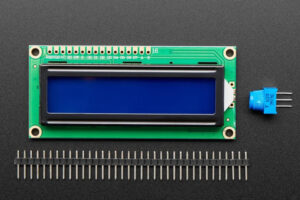
LCDs, or liquid crystal displays, are ubiquitous in our modern world, from the screens of our smartphones to our large-screen televisions.

This article dives into the world of LCD screen repair, providing you with a comprehensive understanding of the issues you might encounter with a broken or cracked screen, how to identify them, and the best solutions available.
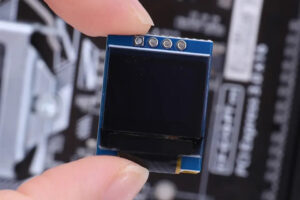
This article delves into the intricate world of display technologies, specifically comparing OLED and LCD displays.
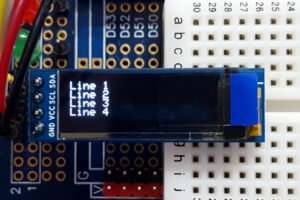
This article delves into the world of compact OLED display modules, specifically focusing on the 0.91 inch 128×32 OLED display that utilizes the I2C interface.
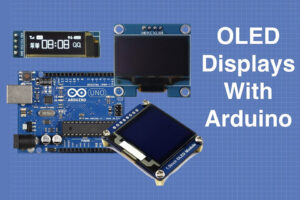
This article explores the fascinating world of Organic Light Emitting Diode (OLED) display modules, with a particular focus on graphic OLED displays.
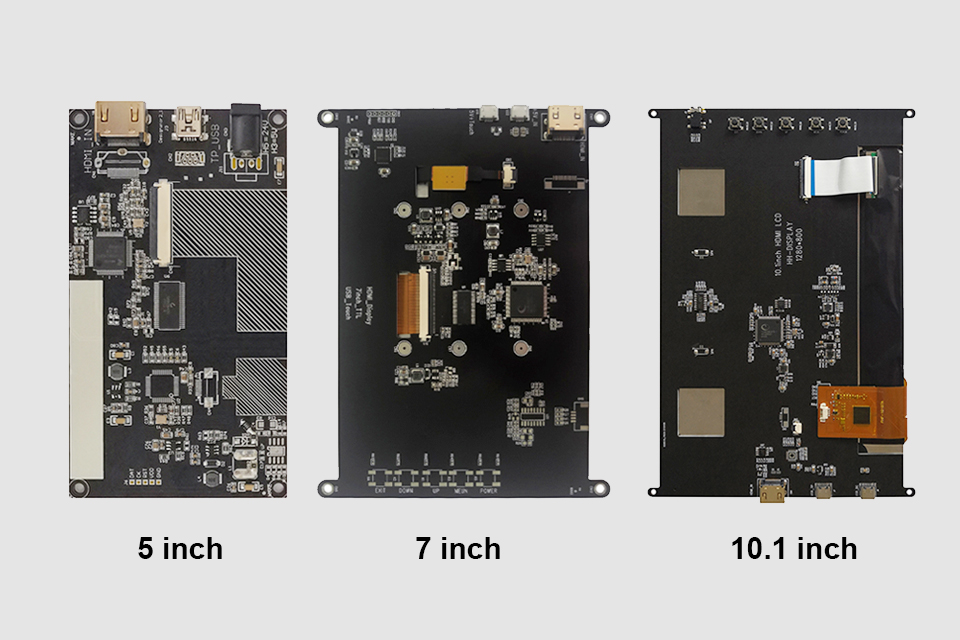
This article explores how to connect an LCD screen to a Raspberry Pi using an HDMI driver board, essentially turning your single-board computer into a miniature HDMI monitor.

This article dives into the exciting world of augmented reality (ar) lenses, specifically focusing on the development and potential of an interchangeable lens system for ar glasses.

This article dives deep into the lifespan and durability of OLED (Organic Light Emitting Diode) displays compared to LCD (Liquid Crystal Display) screens.

@ 2025 display-module. All right reserved.
Fill out the form below, and we will be in touch shortly.